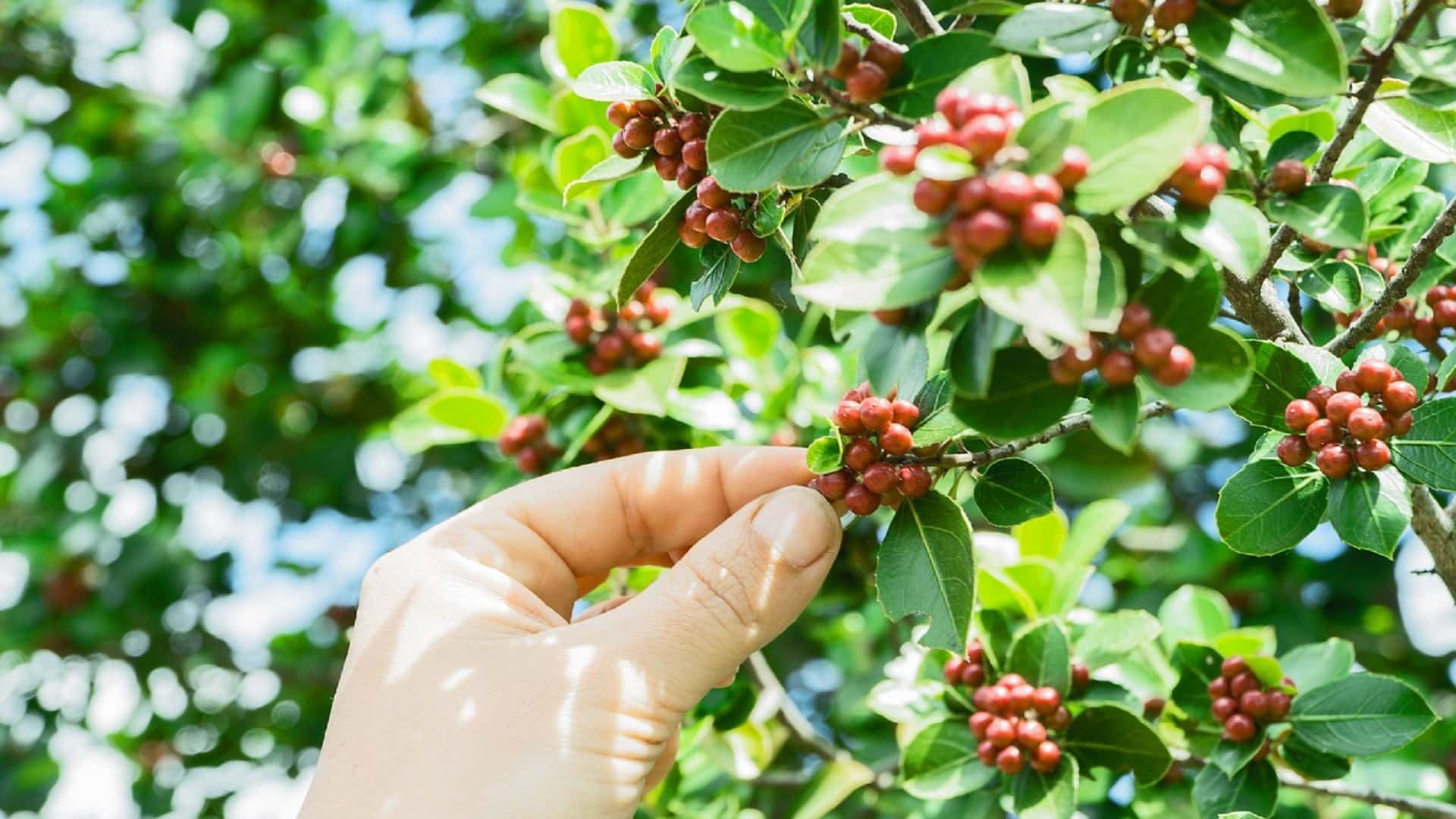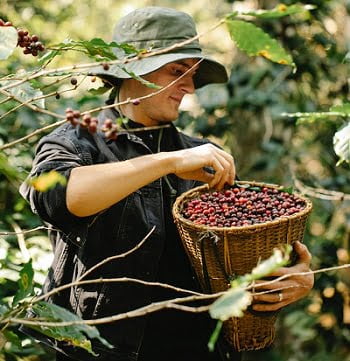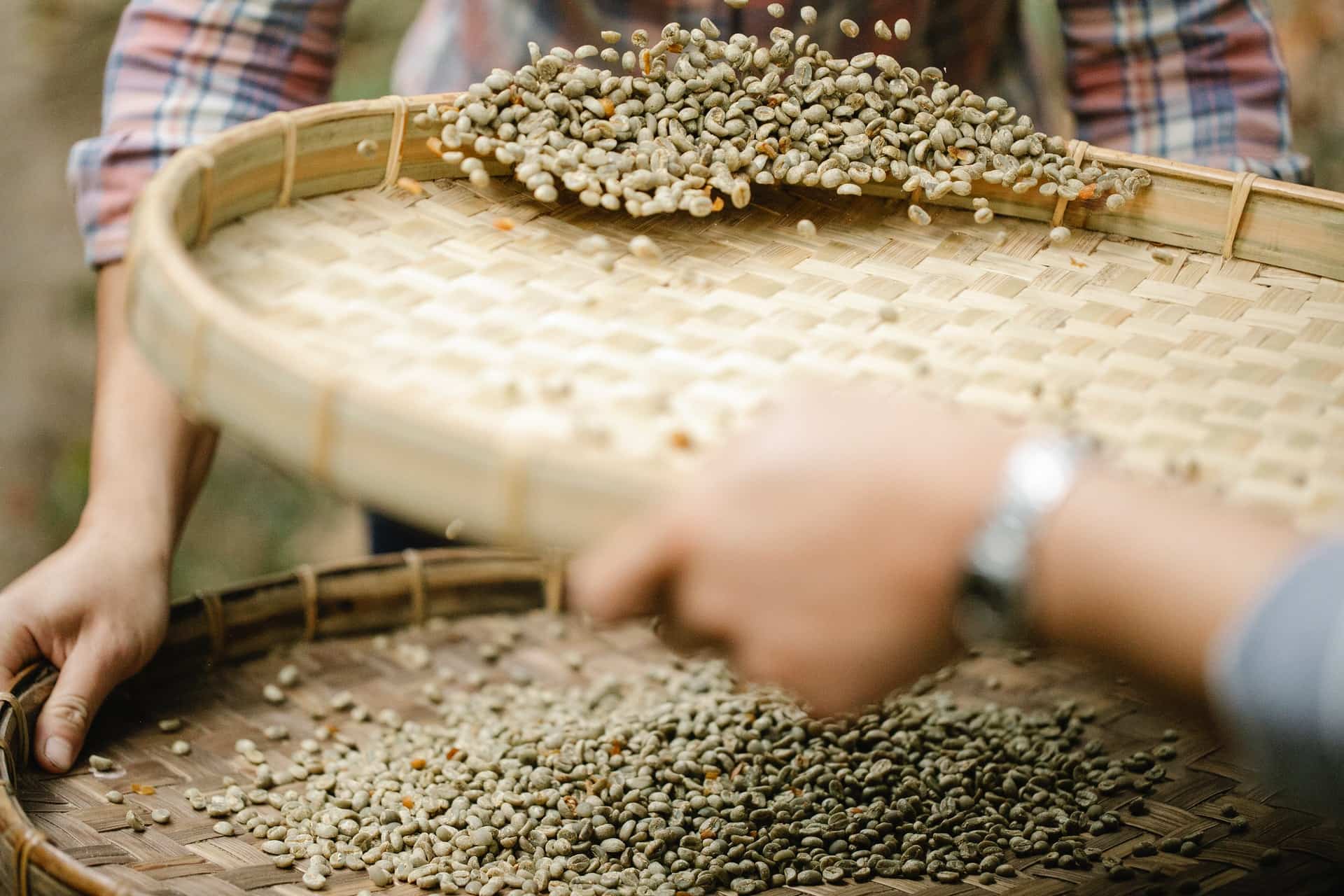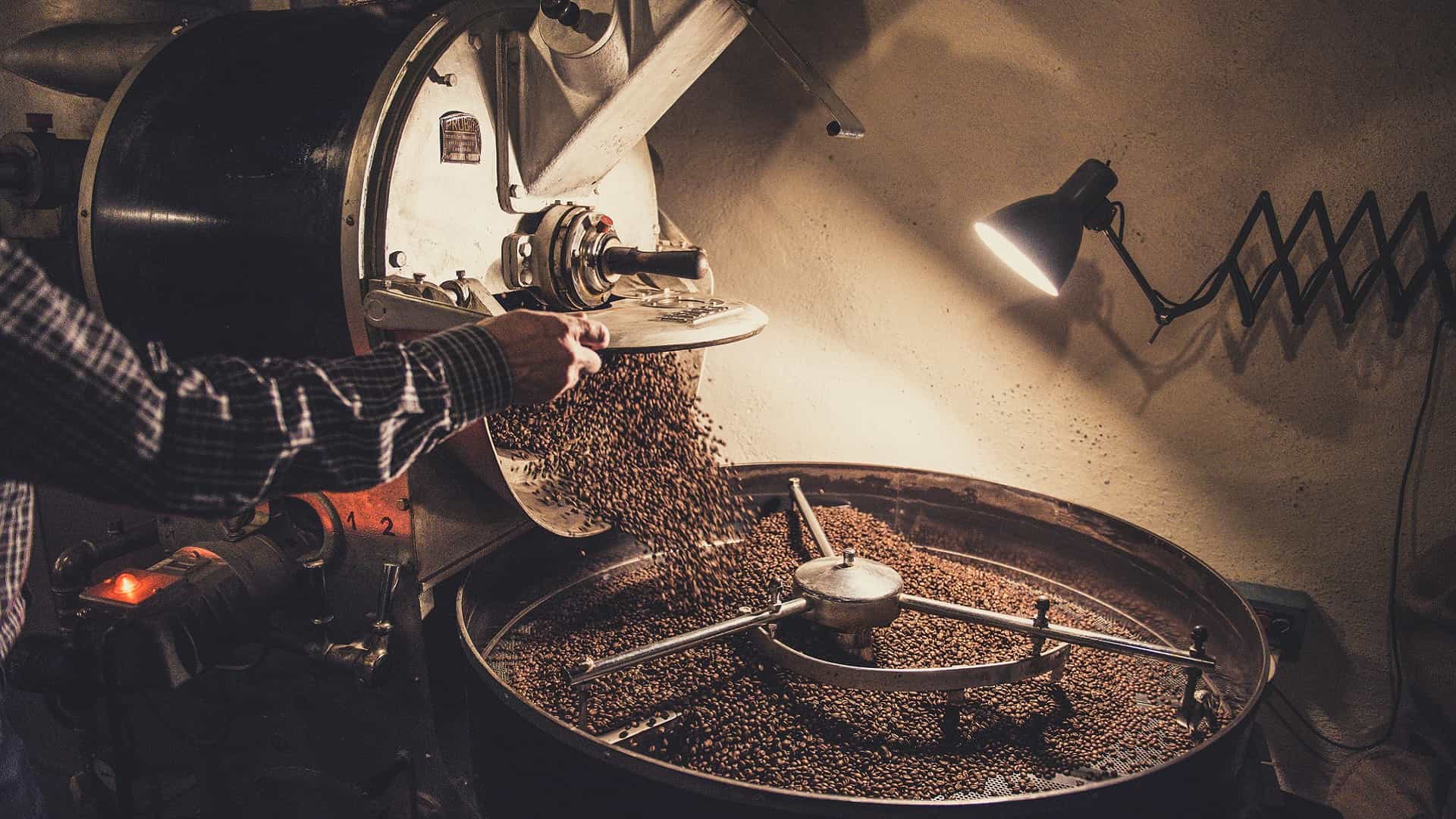Coffee beans come from the seeds of coffee cherries, which grow on coffee trees in tropical regions around the world. Coffee trees first produce fruit after 3-4 years and reach peak production between 5-10 years.
Those unassuming coffee beans you grind up actually have one wild origin story. The seeds get carefully extracted, processed, dried, and exported globally to be roasted into the aromatic brown beans we all know and love. From flowering tropical shrubs to your breakfast cup, coffee takes one heck of a journey!

What is the History of Coffee Beans?
According to a widely accepted story, coffee beans were discovered in the 6th century in Ethiopia. An Ethiopian shepherd is attributed to this exceptional discovery. As Kaldi grazes his goats, he notices that they always gather around a specific plant and eat red cherries.
Also, he noticed that the goats became more energetic after eating red cherries. When Kaldi tried these cherries for himself, he felt energized as well.
He told the whole story to the Monk and gave him some cherries to try. Monk brewed these cherries and made a drink of them, and the Monk also felt more alert in his meditation after drinking it.
Monk Spread the word of this incredible discovery, and the rest is History.
How do Farmers Grow Coffee?
Coffee is grown on farms and plantations in tropical regions with adequate rainfall, rich soil, and mild temperatures. The coffee plant has dense and waxy dark green colored leaves.
The coffee plants begin to flower in about 1 year. It takes 3-4 years to produce red coffee cherries and 10 years to reach commercial scale.
Farmers engage in the main harvest of their crops between April to July. They handpick the ripe red cherries or strip them with machines. After gathering, the fresh cherries undergo processing to expertly remove the outer skin and pulp layers, which then allows the extraction of the coffee beans inside.

where is coffee grown?
Coffee is mainly grown in the tropical zone, also known as the bean belt. The climate conditions and minerals in the soil of this zone are perfect for the growth of Coffee.
Some of the primary locations where coffee is cultivated include:
- Latin America – Brazil, Colombia, Mexico, Guatemala, Costa Rica, Peru. This region accounts for the majority of global coffee production.
- Africa – Ethiopia, Uganda, Kenya, Ivory Coast. Ethiopia is the birthplace of coffee.
- Asia – Vietnam, Indonesia, India. Large Robusta coffee production comes from Asia.
- Hawaii – The only state in the U.S. with large-scale coffee cultivation.
Brazil, Ethiopia, Vietnam, Indonesia, and Colombia are the biggest exporters of Coffee.

How does the region affect the taste of coffee?
The taste of coffee is significantly influenced by the region where the coffee beans are grown.
This comes down to key factors like soil composition, altitude, climate, processing methods, and coffee species that impart nuances based on the region.
For example, the volcanic soil and high altitudes of Guatemalan coffee contribute to a complex, bright cup with crisp acidity.
The beans grown in Brazil’s nutrient-rich soil take on a smooth, approachable taste with nutty sweetness. Distinct harvesting and drying practices in Jamaica lead to exotic mildness.
Ethiopian beans often highlight fruit tones like blueberry, while Sumatran coffee develops an earthy, herbal quality.
Major coffee regions develop signature profiles – whether that’s the winy acidity of Kenyan beans, the mellow chocolate finish of Hawaiian Kona, or the heavy body and spice of Indonesian java.
Check out our interesting article on What is the best coffee in the World
What are the different Types of Coffee Plants?
There are 4 major commercially cultivated types of coffee plants: Arabica, Robusta, Liberica, and Excelsa.
The two most popular coffee beans are Arabica and Robusta while Liberica and Excelsa have a very small share of global output. These four types have further many varieties in them.
Read a detailed guide on types and varieties of coffee beans
Arabica Coffee
Coffea Arabica is the most widely cultivated coffee species, making up about 60% of global production.
It originates from Ethiopia and is known for its smooth, complex taste and floral aroma. Arabica has a sweeter flavor and less bitterness compared to other coffee species.
These beans are mainly cultivated at relatively higher altitudes. The production cost of Arabica beans is much higher than the Robusta beans as they are more vulnerable to pests.
Arabica beans are prized for their nice and nuanced flavor profile and are very popular among coffee lovers. They are mainly grown in Latin American and African countries.
Robusta Coffee
Robusta is a type of coffee made from the seeds of the Coffea canephora plant. It’s known for having a stronger, bolder, and bitter flavor profile compared to Arabica coffee. Robusta coffee makes up about 40% of the world’s coffee production.
Due to its harsh flavor and lack of sugar, it is not liked by most coffee lovers. They are mainly used in instant coffee and to prepare coffee blends.
Robusta coffee plants are cultivated at lower altitudes, aren’t vulnerable to pests, and are relatively easier to grow than other coffee plants.
That’s why the production cost of Robusta beans is somewhat lower than the Arabica beans. These plants are primarily produced in the Asian or African region.
How are coffee beans Processed?
Coffee Processing is the method of converting coffee cherries into finished coffee beans. Coffee beans start out as red cherries on coffee plants. After harvesting, these cherries go through a series of processing steps to transform them into dark brown beans with the rich aroma of dark chocolate that we know and love.
The first step in processing coffee beans is to remove the cherry cover and dry the beans. There are two main methods for doing this i-e the dry method and the washed method.

Dry Coffee Process
In the Dry/Natural Coffee Process, the coffee cherries are dried under the sun before removing the outer layer. The natural or dry method is the oldest and most traditional way of processing coffee beans. It’s sometimes also called the sun-dried or cherry-dried method.
The freshly harvested cherries are dried on large surfaces under the sun, with some of the cherry flesh left intact.
This method results in winey and fruity flavors due to the fermentation of the fruit flesh on the beans. Some coffee lovers enjoy this fruity flavor, while others do not.
Washed Process
In Washed Coffee process the beans are dried without the cherries. The organic matter is stripped soon after the cherries are plucked from the tree. Then the beans are fermented in water tanks to remove the remaining organic matter and dried after that.
The Coffee seeds processed by this method have a clean and bright flavor profile; that’s why coffee lovers love it.
Read a guide on washed vs natural coffee beans
Roasting
After drying, the green coffee seeds are roasted under high temperatures to produce final dark-colored coffee beans. Coffee beans have 1200 different aroma compounds, which can be developed by roasting.
Roasters test different roasting techniques to extract the perfect flavor from the coffee beans. For this purpose, the coffee experts examine different temperature conditions and different times for roasting.
Lighter roasts are fruitier and more acidic, while dark roasts are bitter and less acidic.

If you wanna know more in detail about coffee roasting, Check our guide on Different types of coffee roasts
Final Thoughts
While coffee is enjoyed in cafes and homes around the world today, we have the early Ethiopian growers and Yemenite traders to thank for first cultivating and sharing these magical beans centuries ago.
Brazil, Vietnam, Colombia, Indonesia, and dozens more coffee-producing lands have made growing high-quality beans an agricultural science. But Mother Nature still takes the lead by providing the right soils, rains, sun, slopes, and temperatures to nourish the plants.
Of course, expert roasters and baristas further refine those regional nuances. But take a moment to appreciate where it all begins next time you savor your morning brew.
FAQs
Where do Americans get their Coffee beans from?
A large portion of the coffee beans consumed in the United States comes from the Latin American Countries, specifically Brazil and Colombia. Other major sources of imported beans include Guatemala and Mexico in Central America and Vietnam and Indonesia in Asia.
Does Coffee come from Animal Poop?
No, coffee does not actually come from animal poop! This is a common myth about coffee beans which is not true.
The myth may have arisen because of a type of coffee known as Kopi Luwak. It is made from beans that have been eaten and then excreted by civet cats.
Where is the largest coffee plantation in the US?
The largest coffee plantation in the United States is in the state of Hawaii, known as the Kona coffee belt. In fact, Hawaii is the only state in the USA where coffee is grown.
This region is renowned for producing some of the finest coffee in the World.
Kona coffee is celebrated for its smooth, well-balanced flavor with hints of nuttiness and bright acidity.
Other Interesting Articles:
- What is Cascara Coffee
- How long does the Coffee last in the Fridge
- When was the coffee maker Invented
- Espresso Powder vs Instant Coffee
- How to Make coffee without Machine
- Why is Coffee Called a Cup of Joe



